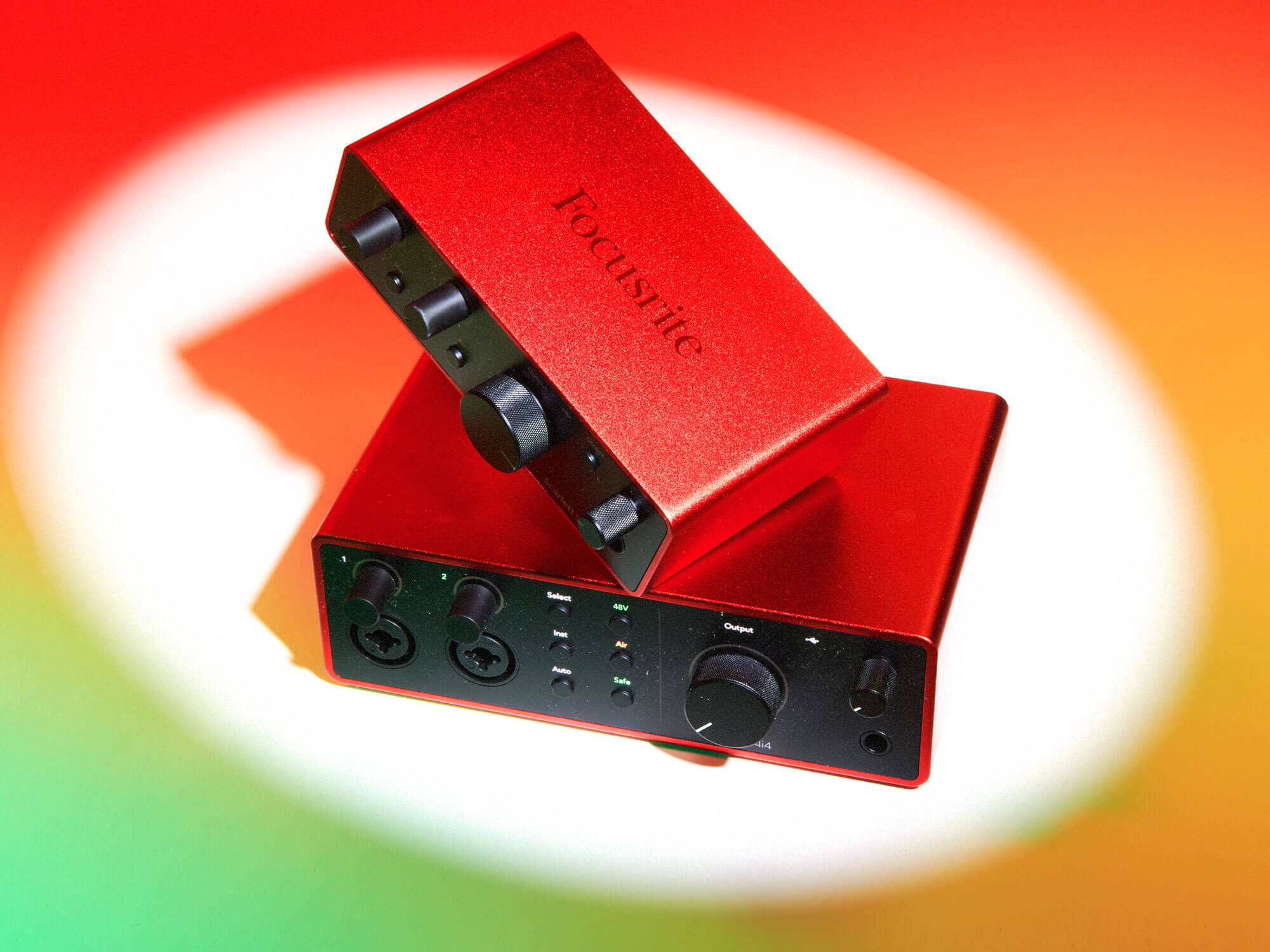
The Scarlett 4th Gen story: Focusrite’s journey from George Martin’s AIR to bedroom studios everywhere
Focusrite’s Will Hoult and Nicholas Howlett tell us the story of the Scarlett, with U2 and Foo Fighters mix engineer Adrian Bushy describing his love for the new audio interface.
Image: Simon Vinall
“It’s funny; so many people just don’t realise just how many Scarletts exist,” says Nicholas Howlett, head of the marketing team at Focusrite. “I think we’ve got over six million Scarletts out in the world now, which outstrips the next-best audio interface by far.”
It’s one of the most recognisable pieces of audio equipment anywhere, all but synonymous with the home recording revolution. Focusrite’s Scarlett interface first arrived in 2011; the little red box would soon find its way into bedrooms and studios around the world, enabling musicians of any level when it came to songwriting, recording and everything in between.
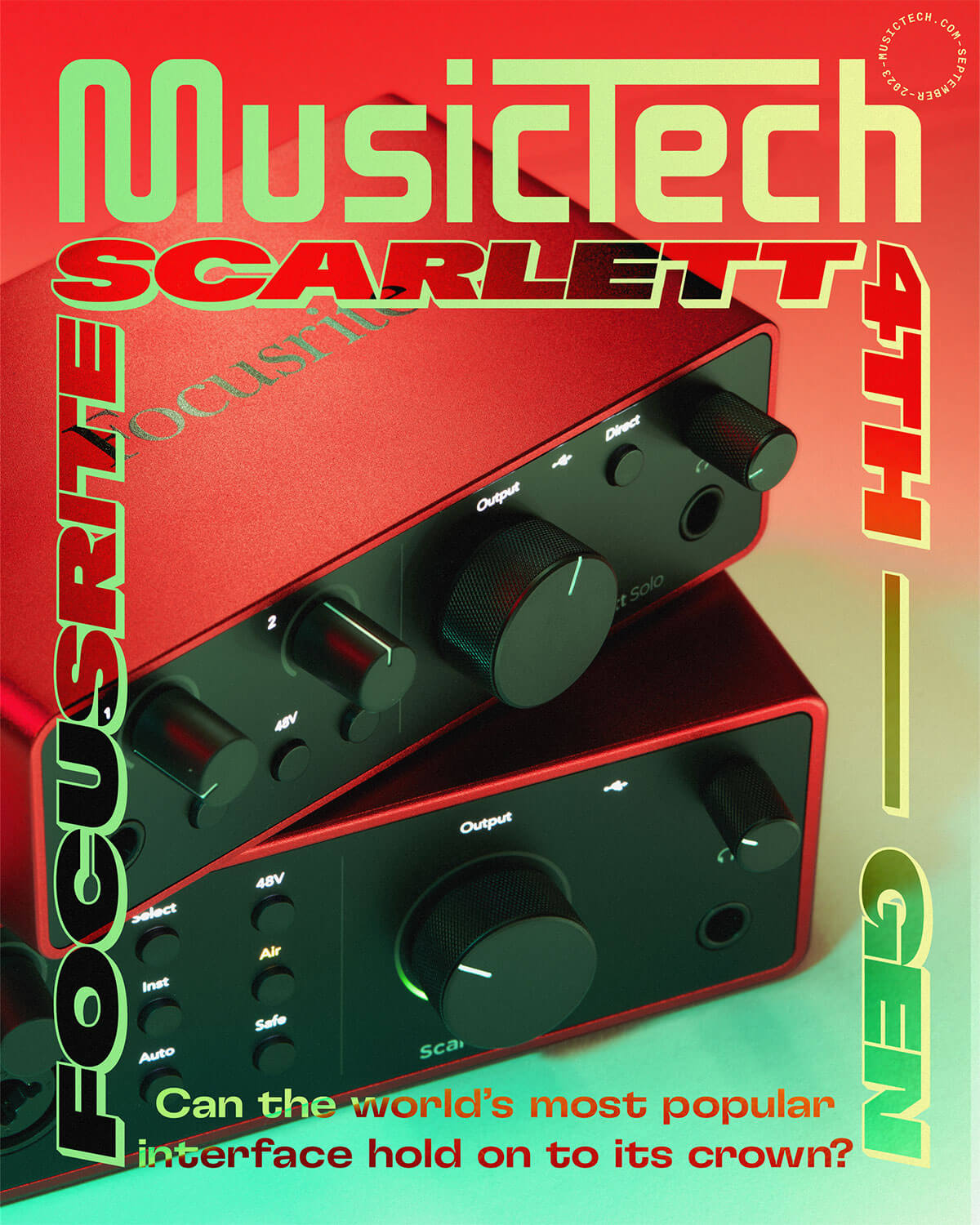
New levels of accessibility meant that even musicians with little to no prior knowledge about recording, and with little more than a microphone to speak of, could plug in, play, and actually sound good. The Scarlett has, according to its creator, contributed to more records than any other interface in history; we’re not going to argue with that. Generation 2 arrived in 2016, then Gen 3 in 2019. Now comes a fourth iteration of the design, which Focusrite declares reinvents the Scarlett all over again: “The Original. Remastered.”
Generation 4 welcomes significant updates across the Scarlett range; from the single mic preamp, single line input Solo, to the the dual-preamp, 2-in/2-out 2i2 and the 4-in/4-out 4i4. Intelligent gain and clip management, extended dynamic range, a recycled aluminium chassis and plenty more.
The ubiquity of a product such as the Scarlett can become a curse as well as a blessing, particularly when it comes to those falling into the ‘affordable’ bracket. Nowadays, to walk into a home studio and see a Focusrite Scarlett by the computer is by no means remarkable, and might even prompt a contemptuous sniff of familiarity from an artist. Such is the lot of a benchmark-setting gear: what was once impressive is, by its own volition, now unremarkable. Just look at Apple’s iPhone, for a prime example.
The developers of such products must inevitably find new ways of standing out in a marketplace that they have helped to define; in the world of audio interfaces, this also means navigating constant shifts in connectivity formats and home computing power, as well as third-party software developments.
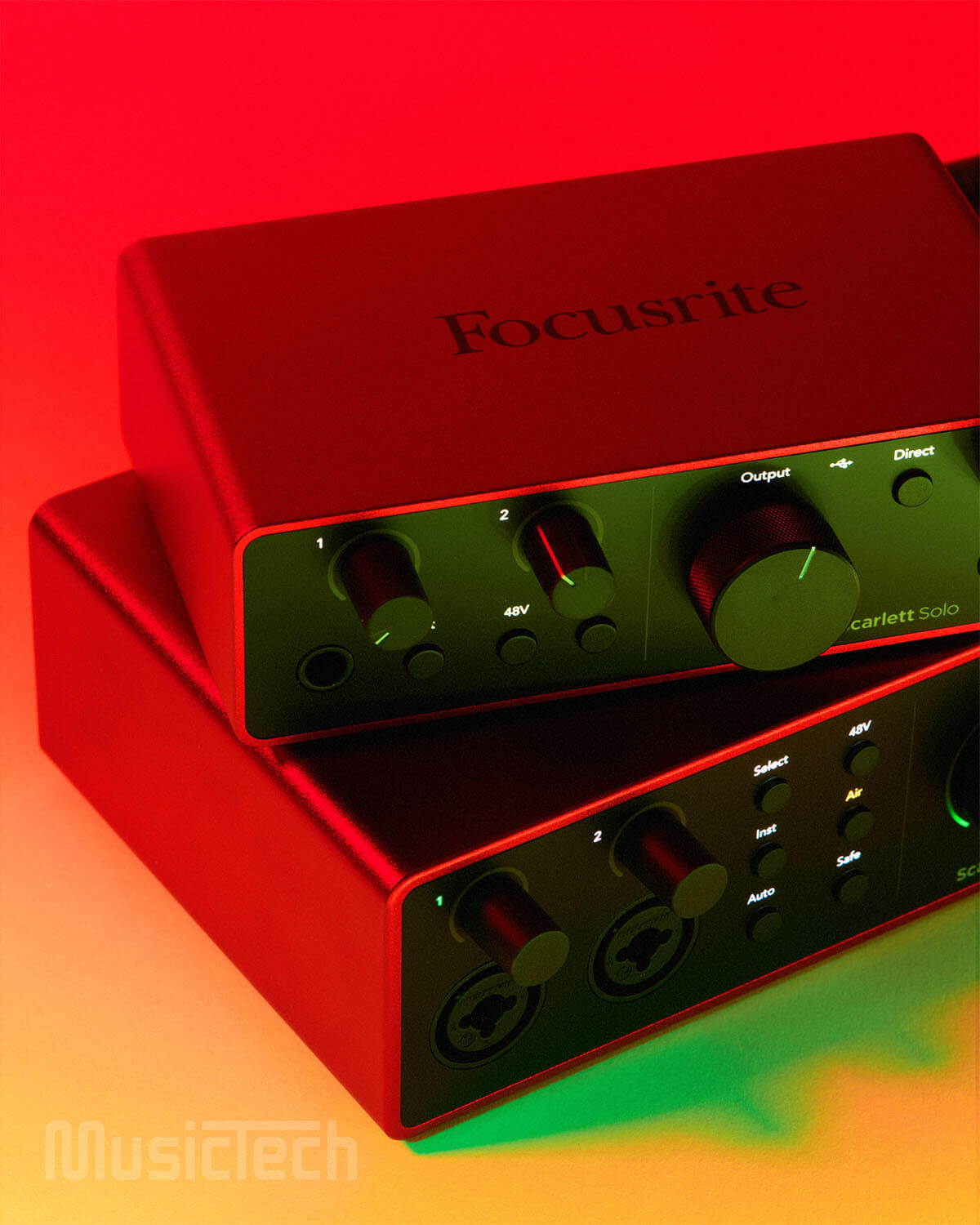
Leading The Pack
In 2023, that marketplace is congested and the competition is stiff. More compact interfaces continue to hit shelves every year, from a litany of venerable developers: Audient, Universal Audio, Arturia, PreSonus and many more. All present their own take on the compact interface format and even the most heavyweight names in pro audio, such as Neumann, Solid State Logic and AMS Neve, have thrown their own hats into the ring, albeit with some of these products commanding significantly higher price points.
“The Scarlett’s failure rate is still phenomenally low. You might see twice as many complaints about Scarlett on forums as anything else, but there are probably ten times as many interfaces in circulation.”
It nonetheless remains that for all of these, to some degree, the Focusrite Scarlett is the product to beat. “What’s the first thing that pops into your head when I say the words ‘audio interface’?,” asks Patrick Baird on his home recording YouTube channel The GarageBand Guide. “Chances are, what you’re thinking of is rectangular, red, and has the word ‘Focusrite’ emblazoned across the top of it.”
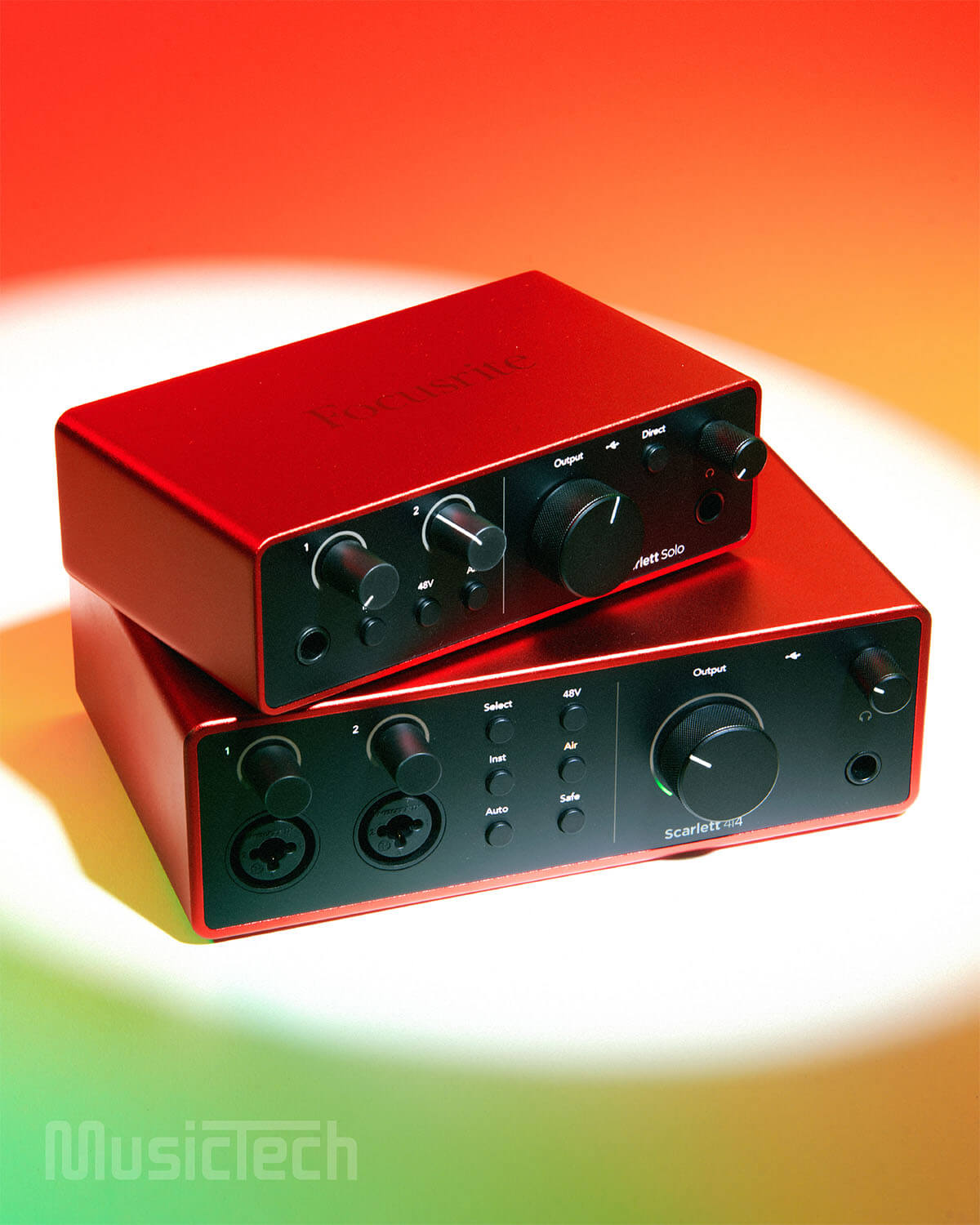
Focusrite enjoys a significant chunk of the desktop interface market share. We’re told there may even be more Focusrite Scarletts sold globally than Fender Stratocasters.
Howlett joined the company shortly before the release of the second-generation Scarlett range. “We’re always banging the drum about how low our failure rate is, how good our drivers are and all that sort of thing,” he says. “But because there’s always someone talking on a forum about a Scarlett going wrong, it’s easy to make it look like lots of Scarletts go wrong. But that’s only because there are just so many of them out there!
“The Scarlett’s failure rate is still phenomenally low. You might see twice as many complaints about Scarlett on forums as anything else, but there are probably ten times as many interfaces in circulation. I haven’t worked out what we do about that one just yet! [laughs]”
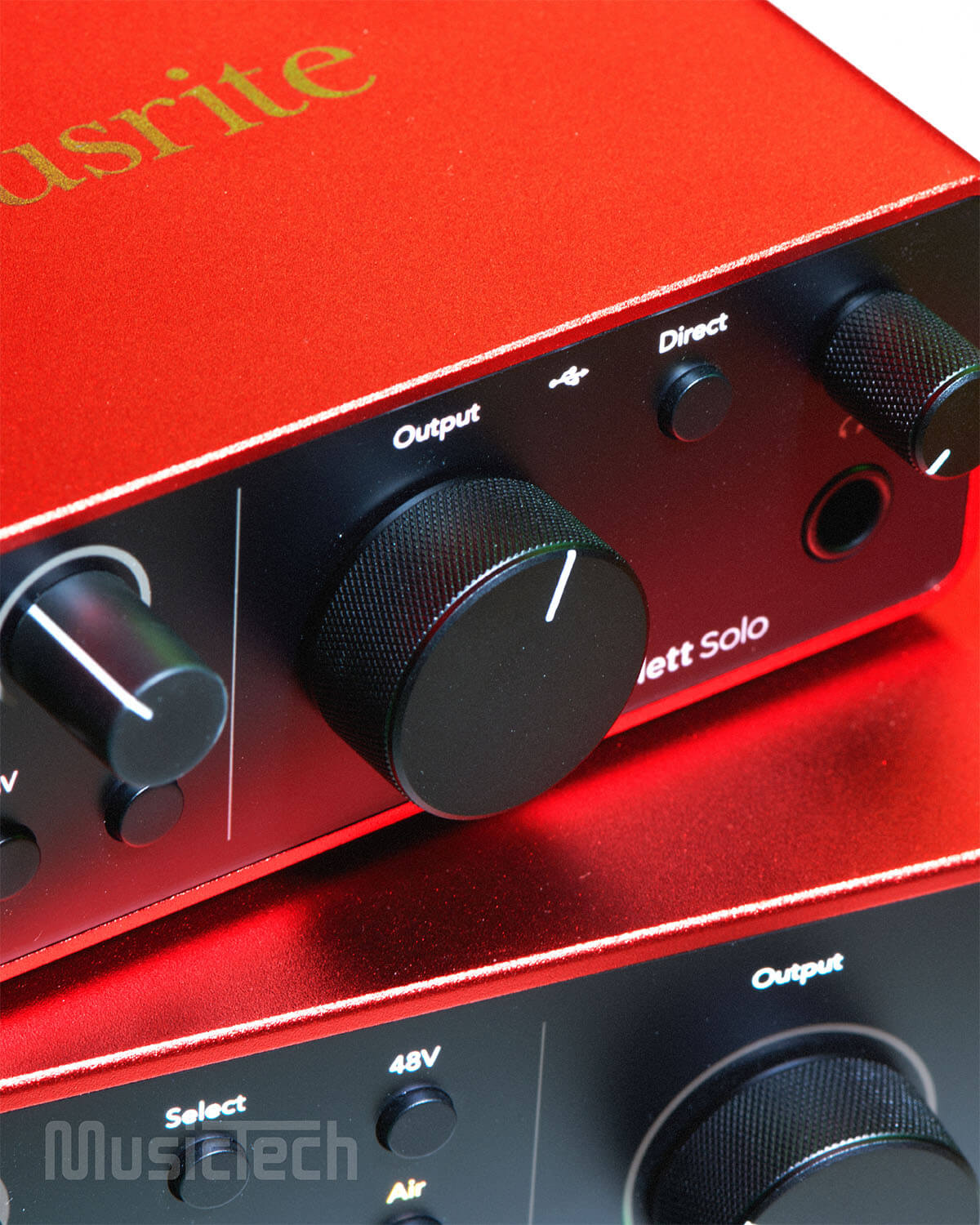
Focusrite’s name may, for many recording artists, be associated with compact interfaces in bedrooms and budget setups, while developers like Neve and SSL maintain a reputable association with six-figure consoles furnishing some of the world’s most vaunted studios. However, the gulf between these companies isn’t as wide as it might seem. In fact, in many ways, there is no gulf at all.
In 1975, having made his name as an undisputed leader in pro audio, Rupert Neve sold the Neve company and along with his wife, Evelyn, established ARN Consultants to focus on education, sound reinforcement and acoustics. Ten years later, the couple decided to incorporate a new company: Focusrite Ltd.
A raft of new, modern outboard Focusrite gear soon followed; including the now-iconic ISA-110. The preamp was originally designed at the request of legendary Beatles producer George Martin for inclusion in his Neve console at AIR Montserrat. This new residential studio on a tiny British Overseas Territory in the eastern Caribbean would host Paul McCartney, Elton John, Dire Straits and more. Sadly, the studio would later be destroyed by a catastrophic hurricane in 1989.
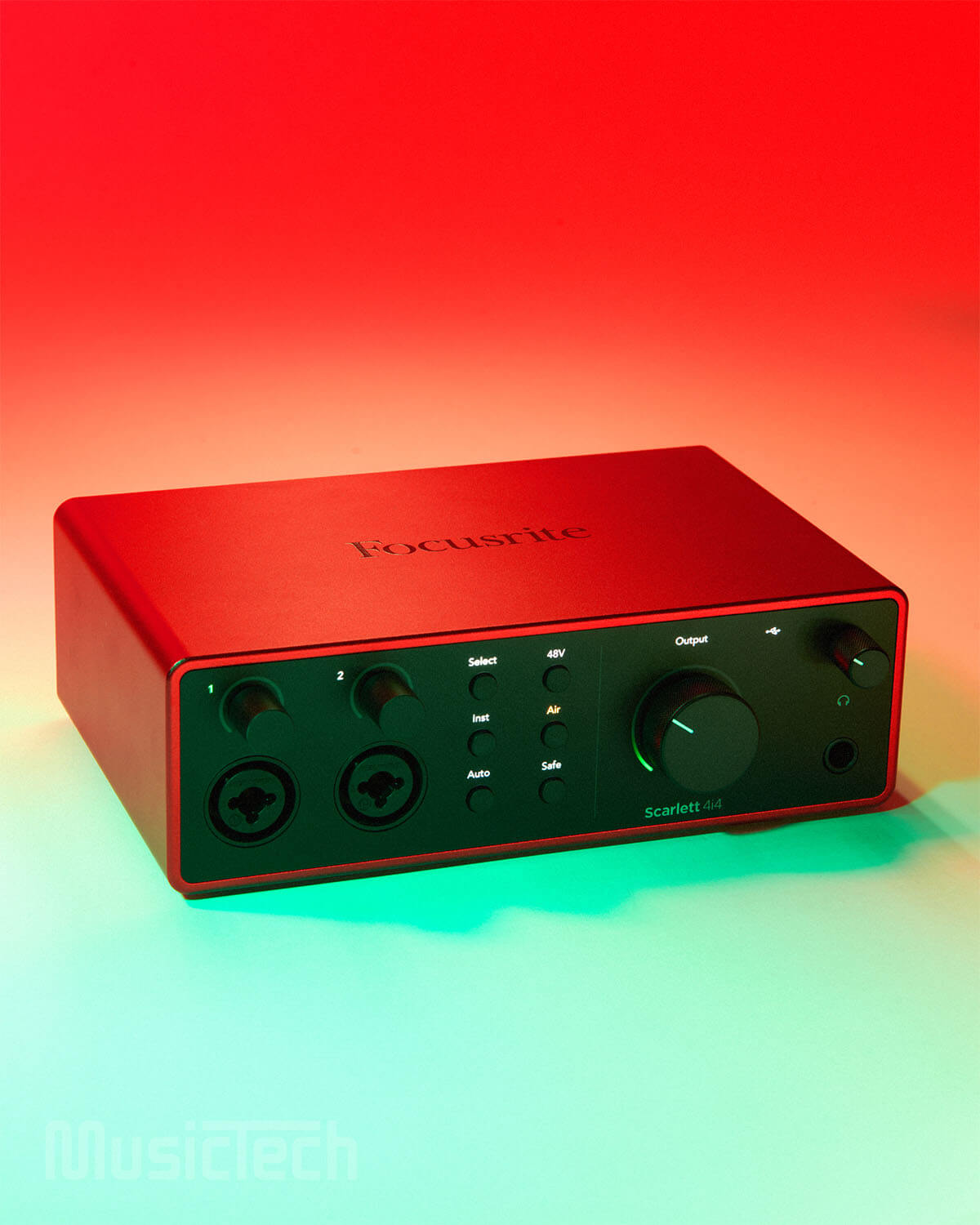
That same year, the assets of Focusrite Ltd would be acquired by Phil Dudderidge, co-founder of Soundcraft Electronics. From there, Focusrite would begin to expand its target customer base to include those recording on a budget, and four years later the design of the ISA-110 was rebooted and incorporated into the 2U rack-mount Red range.
We looked back on those as the first pieces of audio hardware that really tried to be beautiful showpieces as well as things that really delivered from an audio perspective.
Seeing Red
Fast forward to 2012: Will Hoult, now Focusrite’s head of product management, had recently joined the company as a member of the marketing team. He was working on a bold new product that sought to unite the seemingly disparate notions of efficient functionality and a sense of genuine creative flare.
“I launched Scarlett 2i2 back in September of that year,” he tells MusicTech. “I can remember us being really excited about the combination of both the audio performance and the aesthetic design of the product. It was really quite striking. We were coming from the Saffire 6 USB before that, and the Saffire FireWire range. They were nicely designed and highly functional, but they were also black metal and plastic boxes. When the 2i2 came along, it really was the start of something that married function with something that, I think, was quite beautiful.”
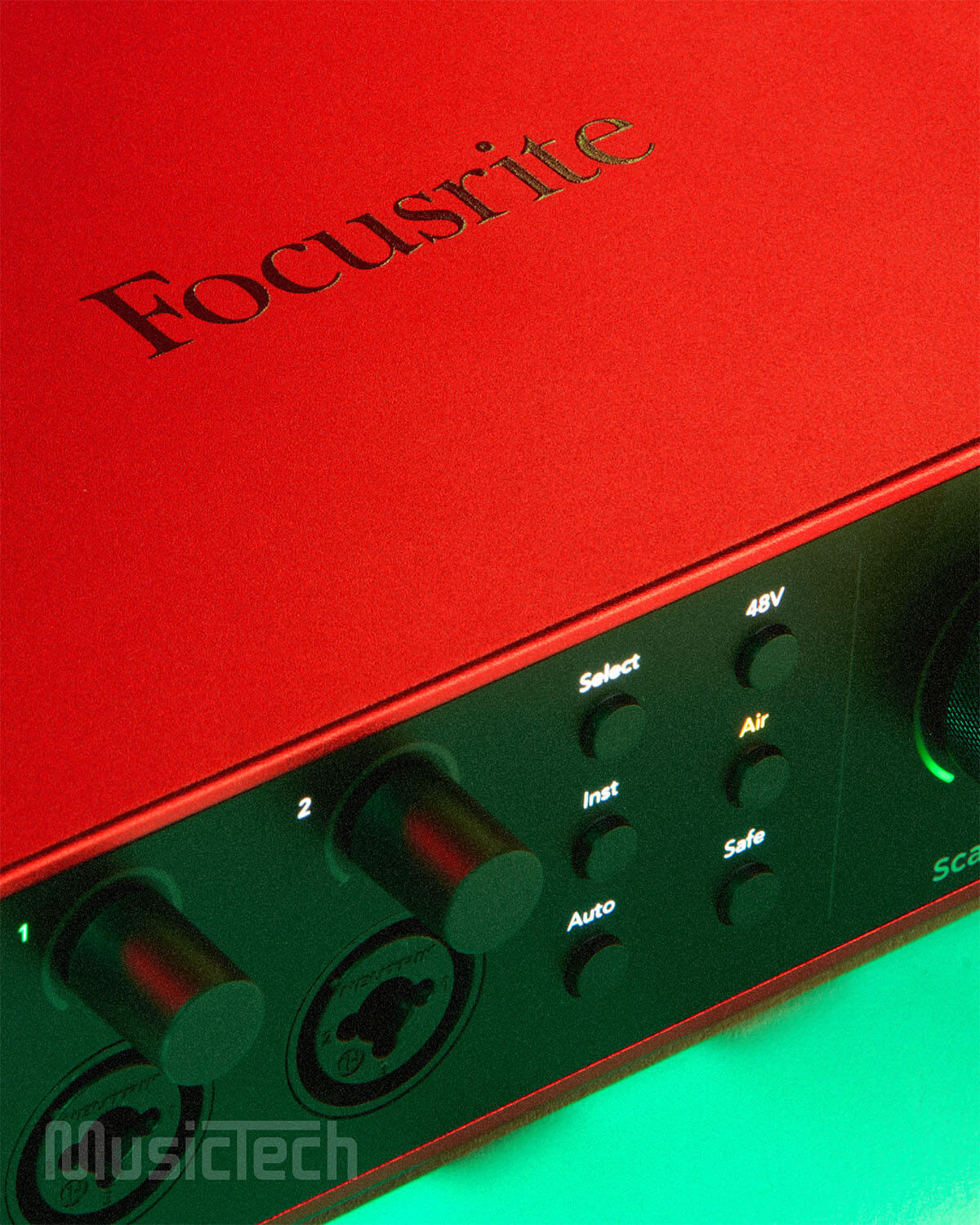
Unlike other interfaces before it, the Scarlett range sought to deliver an audio interface that not only presented its functionality on a platter, but felt enjoyable and creative to use. This, Hoult explains, starts with a simple case of form meeting function.
“There were two primary striking elements of it. One was the use of the colour red. We had developed the Red mic pres, compressors, EQs and so on, during the 90s. I think, as a company, we looked back on those as the first pieces of audio hardware that really tried to be beautiful showpieces as well as things that really delivered from an audio perspective. So to some extent, we were celebrating our heritage with that choice to go red. That was a big part of it; it was a great opportunity for us to tell the story of Focusrite and to marry that back to our history.
“The second thing was the [LED] halos on the product. They were an innovation in terms of providing functional metering, but also metering that had a bit of excitement about it. And we had the halos in a continuous circle around the input knobs. It was just a very visually striking product. And at the same time, it was delivering really excellent audio quality.
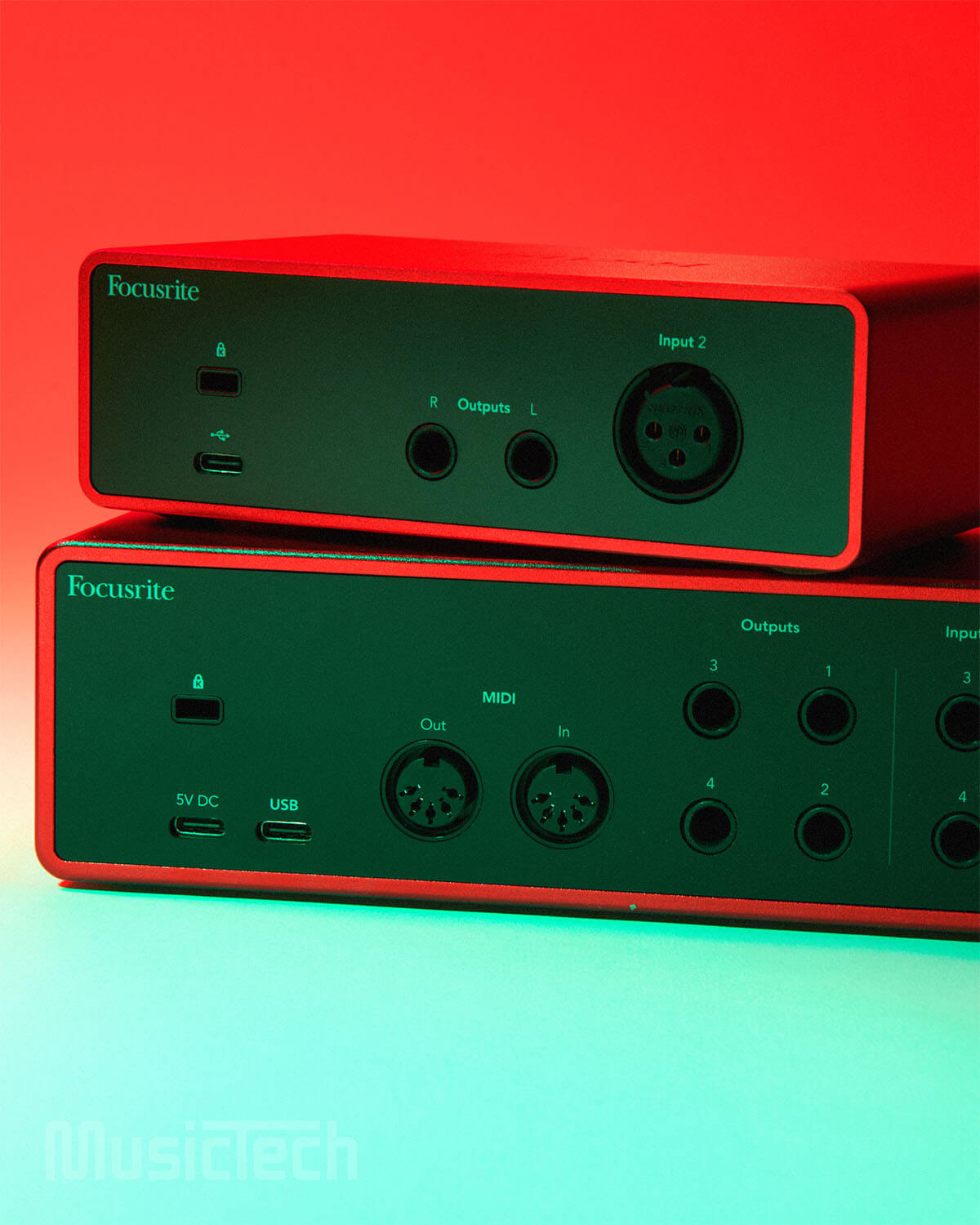
“It had a really straightforward user interaction, which meant it was really simple to get recordings going and ultimately get a great sound. For me, those were the elements that made it truly exciting. I don’t think we truly realised at the time just how big the range would become; how much Scarlett 2i2 would really propel us forward.”
The second generation of Scarlett would see improvements to its physical design, its dynamic range and its sample rate, offering a maximum of 192kHz over its predecessor’s 96kHz.
“We’d had nearly five years of learning by that point,” explains Howlett. “Learning what people liked about Scarlett, what people wanted from it. We learned a lot about the Solo customers as well. So we were able to make much more deliberate decisions about what we’re actually giving to customers and where our strengths are, where our value lies.
“But to put it into context, we were selling something like a quarter of the amount of Scarletts we’re selling today. So it had taken a big step forward. We realised we were really onto something with Scarlett at that point. It was an iterative step, doubling down on what we learned and being a little bit more surefooted on what value we’re actually offering to our customers. But 3rd Gen is where it starts getting really interesting.”
Indeed, if the company was stepping out with the first generation of Scarlett and had begun to find its feet with the second, it was hitting its stride with Generation 3. A key development came with the Easy Start tool, which Focusrite promised would get even the least experienced users up and running with their interface in a matter of minutes.
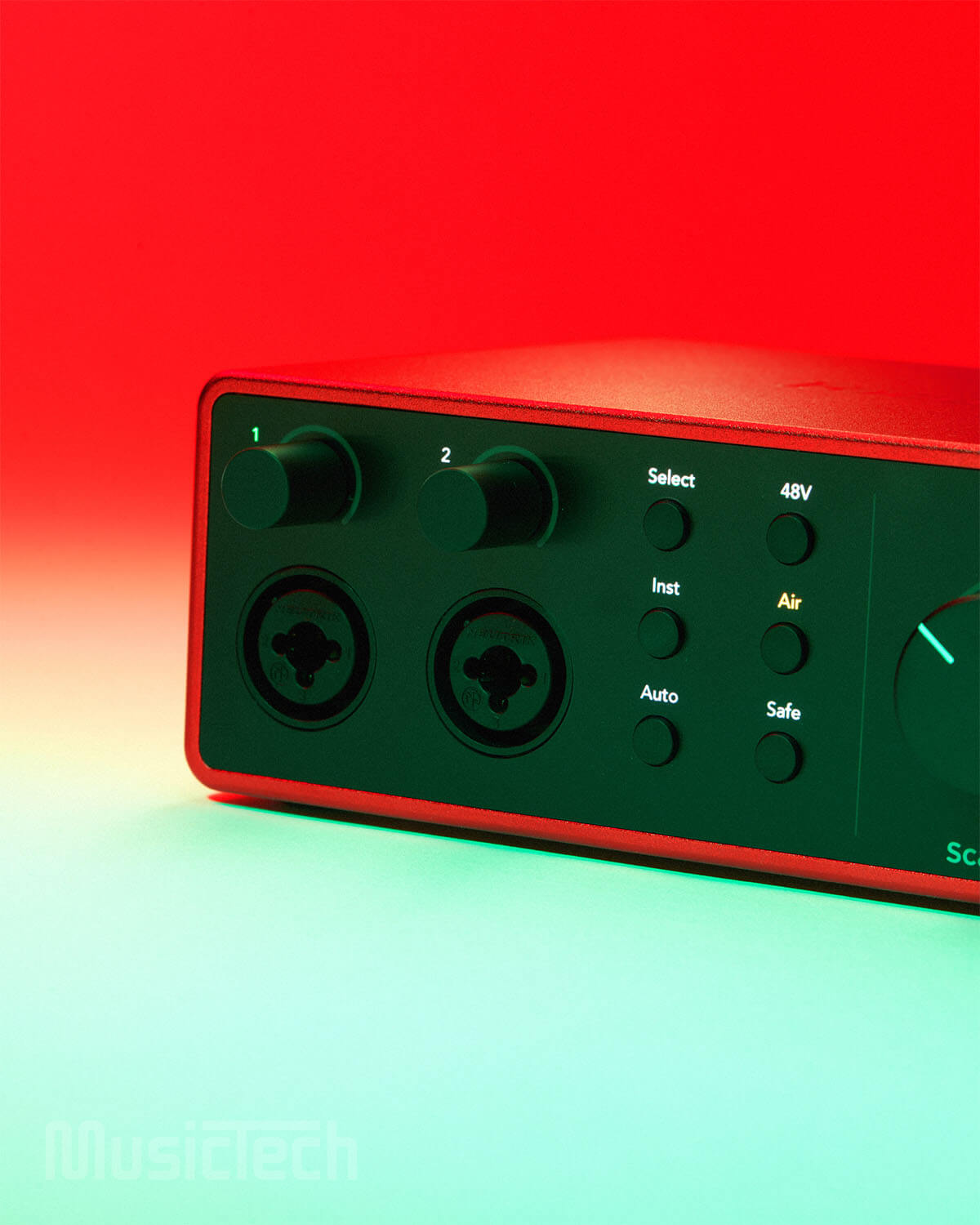
“We ask you what you want to do, and we show you how to do it,” says Howlett. “Almost overnight, it changed the quality of the feedback that we were getting. It went from, ‘great interface!’ to: ‘I love it. It’s perfect.’”
The Scarlett’s third generation also introduced Air mode, a switchable sound sculpting tool for imparting a transformer-like sonic character to the Scarlett, reminiscent of that of the original Focusrite studio consoles.
Generation 3 also saw a shift in Focusrite’s marketing strategy. “We really backed ourselves with 3rd Gen,” continues Howlett. “We spoke much more about the musical side of it. All of our marketing content was led by musical performances, that sort of thing. We allowed ourselves to be musicians talking to musicians, rather than do what I think everyone in this industry has felt like they’ve had to do for a really long time, which is going out with punchy statements about ‘class-leading conversion’, and ‘industry beating specs’ here, there and everywhere.
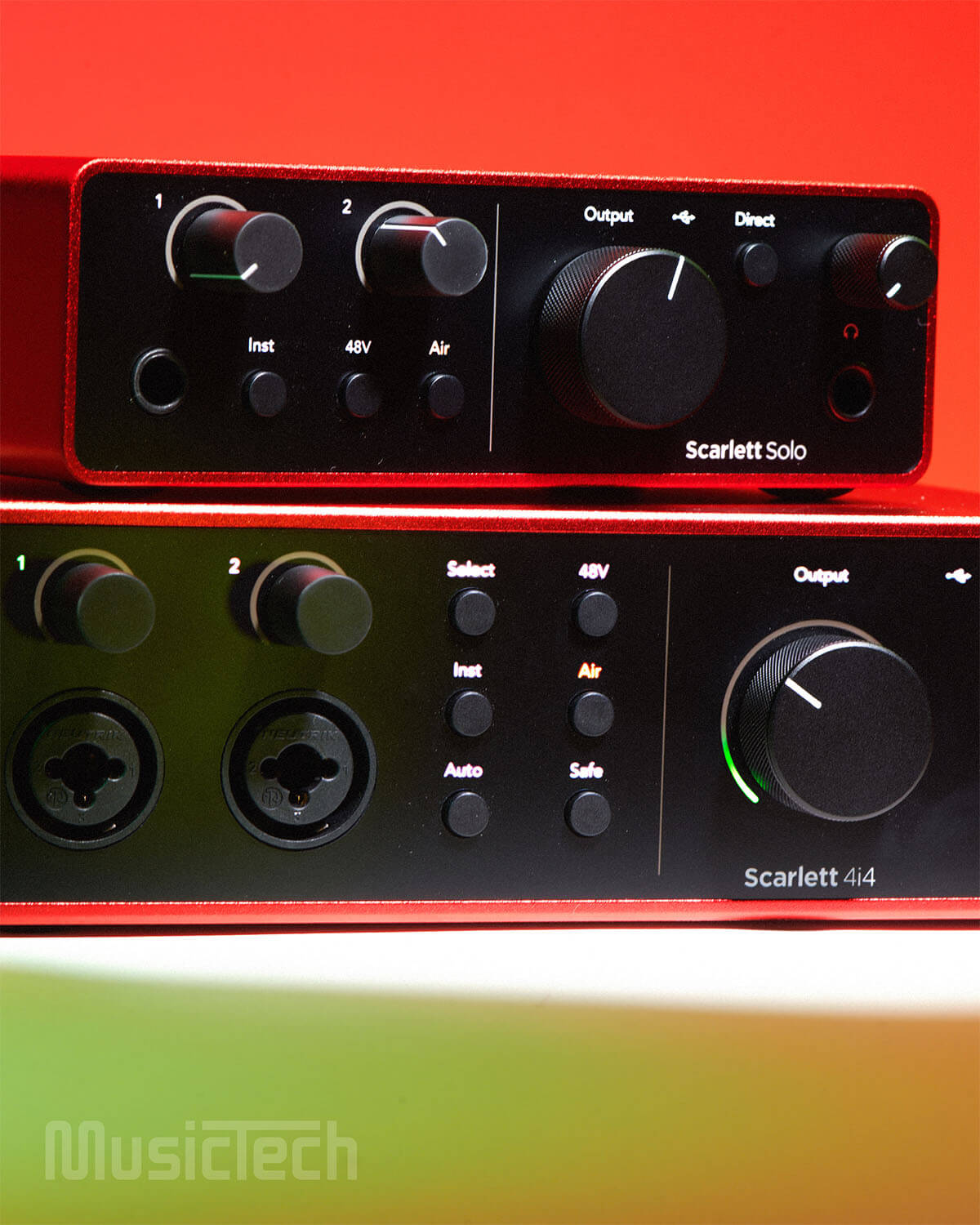
“We wanted to show that we are our own customers. We are musicians; we know what the music-making experience is actually like for people. Not just talking about buying this ‘pro audio box’ that’s going to do this ‘pro audio thing.’”
Will Hoult agrees. “I don’t want to sound like I’m claiming this is unique in our industry, but it’s true to say that just about every person who has been involved in some aspect of the Scarlett’s development or design – even anyone who provides customer support or works in the marketing department – almost everybody is a musician. And that goes for the CEO of our whole group, our managing director, our chief revenue officer… They are musicians working in a music company. The whole way through the decision-making process, it’s musicians who are making those decisions.”
Going Fourth
Where else could the range possibly go with Generation 4? In one sense, not too far. “If you look at a Scarlett 4th Gen,” says Hoult, “you’ll still see the same iconic red aluminium unibody chassis that I coined in 2011. You’ll still see the black panels on the front and the rear. It still looks and feels like a Scarlett. But in almost all other respects, it’s actually quicker to say what’s not changed from Scarlett 3rd Gen.”
The 4th Generation welcomes brand new digitally controlled analogue mic pres on the 2i2 and 4i4, with an impressive dynamic range of 120dB and 69dB of gain, along with greater input gain across the entire range – including the Solo.
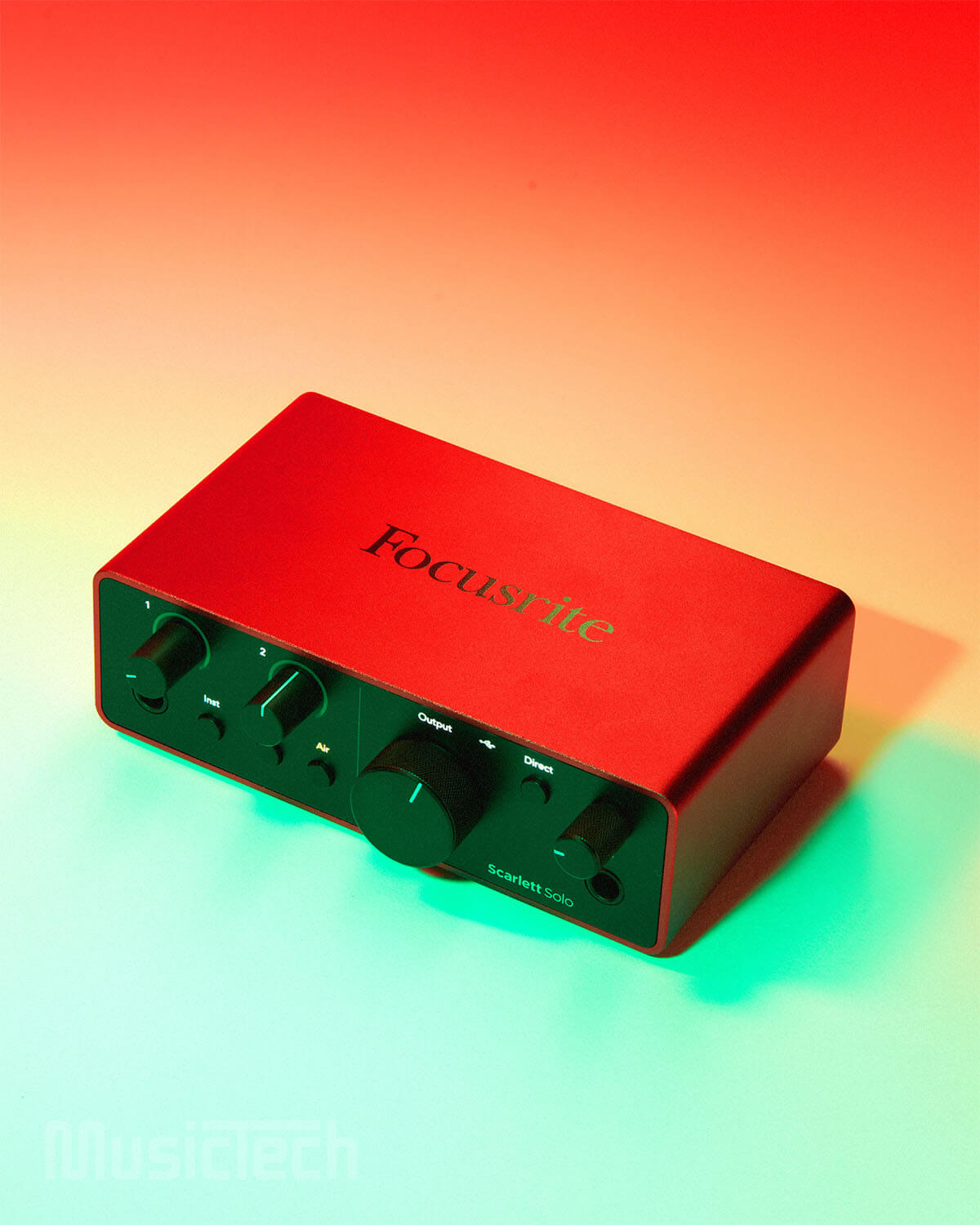
Auto Gain allows players to perform a ten-second ‘sound check’ and have the interface adjust its gain automatically, even taking noise and spurious sounds (such as a mic stand-knock) into account in the process. Though not new to the industry – Audient’s EVO series has boasted this for a few years – it’ll be a welcome addition for many.
Clip Safe also makes its Scarlett debut, something that Hoult describes as “like somebody watching over your input level, making gain adjustments as needed to prevent you from clipping – except they’re doing it thousands of times per second!”
The Scarlett’s metering also receives an update: now, instead of full-circle LED halos simply illuminating in different colours, Generation 4’s meters move dynamically, ‘filling up’ clockwise with higher SPL. “We know that customers over the years, particularly those who are new to audio, have found it difficult to set the right input level for their recording,” continues Hoult. “The combination of having lots of gain in the analogue domain, having sound check functionality, having Clip Safe mode, and also updating the way that the meters work… it all makes it so much easier to get a great input level when you’re recording.”
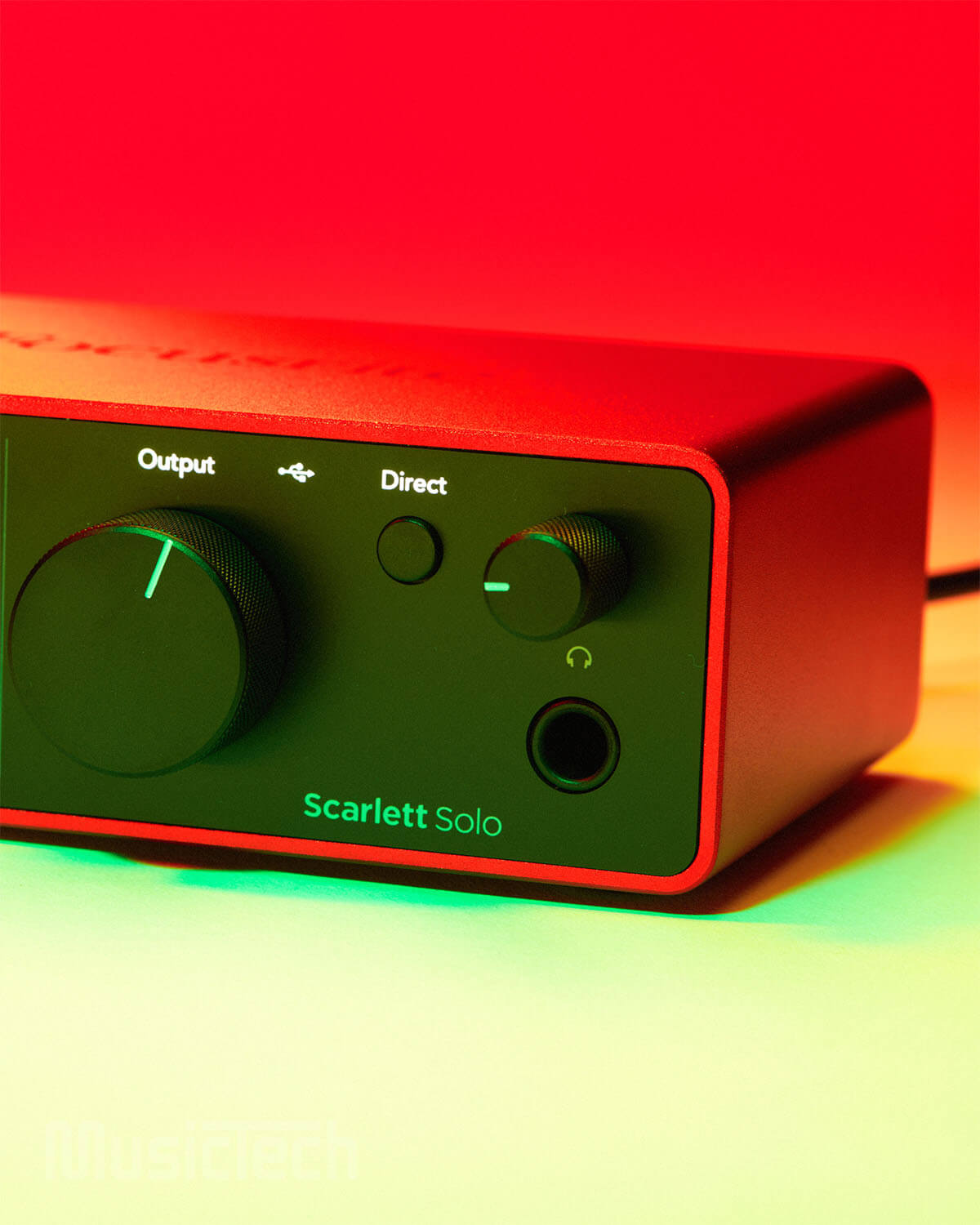
Those on the ground are already responding enthusiastically to the new generation of Scarlett. The aforementioned Patrick Baird, for one, has dubbed it “One of the best audio interfaces you’ll ever use.” MusicTech’s 4th Gen reviews, meanwhile, declared the Solo interface “perfectly meets the needs of the singer-songwriters, podcasters and streamers,” and of the 4i4 concluded: “it’s hard to think of an interface better suited to a small studio or portable setup.”
Grammy-winning engineer, mixer and producer Adrian Bushby, known for his work with Foo Fighters, U2 and New Order, also sings its praises: “It’s a vast improvement on the other models –and it’s great for working on the go,” he tells us.
“I sometimes record in DIY studios, and being able to throw this into a backpack and set up a high-quality recording experience wherever I am is awesome. I can imagine it’s going to help a lot of breaking producers in today’s landscape level-up. We’ve seen so many great records being made outside of the traditional studios, and I’m all for that innovation. This is a tool that helps me keep up with that shift.”
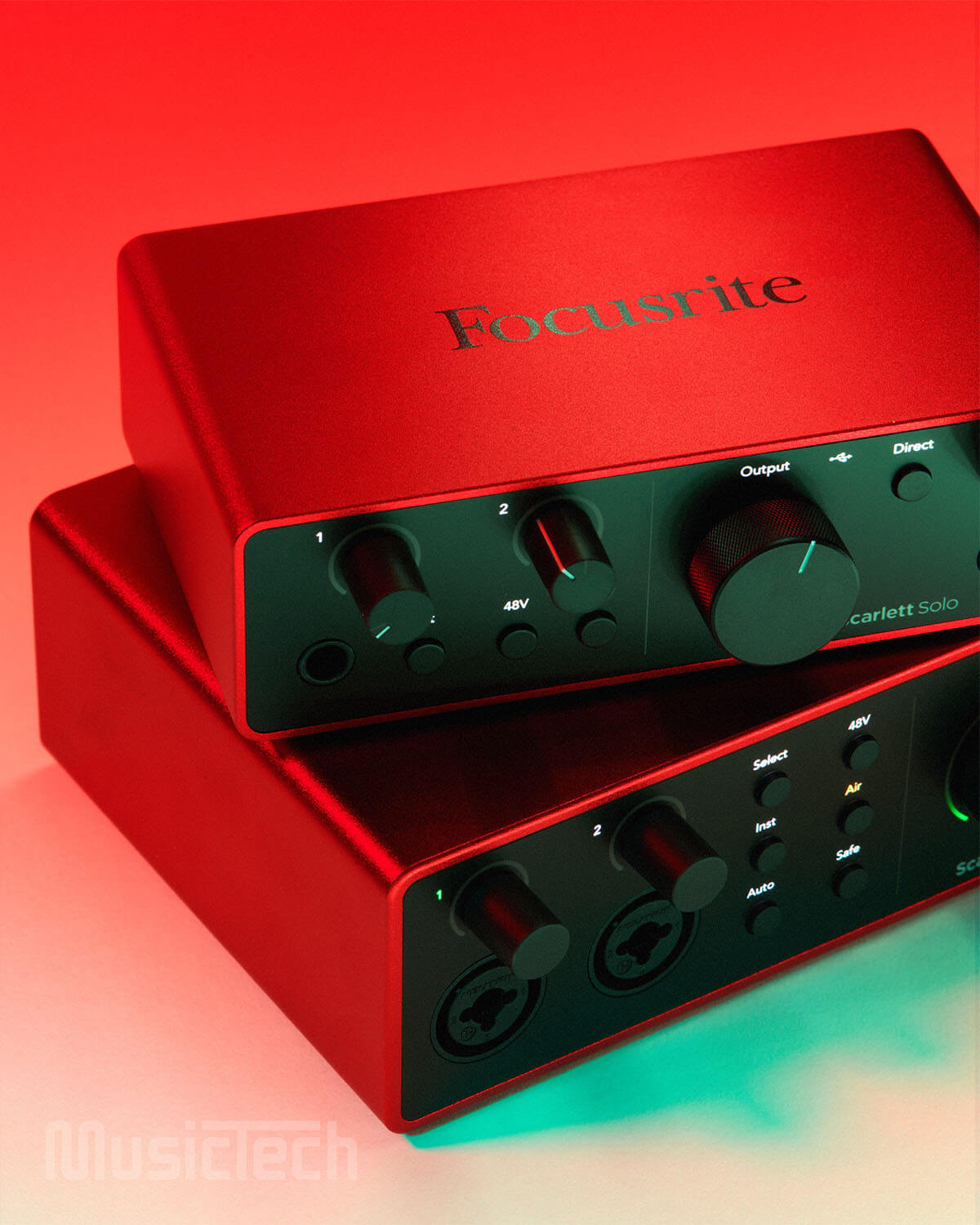
What, we ask, might be in store for Generation 5? Will Hoult laughs. “I obviously can’t go into any detail on that. But what I will say is: I remember, the week after we launched Scarlett 3rd Gen, I was in a meeting with some of our board. I said, ‘Right, we’re going to start working on 4th Gen today.’ That was four years ago. The conversations, the visions, they all started there. So it’s been really nice reaching this point. It’s definitely something that I’m proud of. I’m proud of everybody here who has delivered that. It’s a huge moment for all of us, to see it go out the door. And the reaction to it has been fantastic.”
“We’ve learned a lot,” agrees Nicholas Howlett, “about how much of ourselves that we can get into a product, and what we can achieve for our customers when we keep asking, ‘What if…?’ And when we keep trying different stuff. That’s an approach that we’re going to carry forward with us from here. I’m really excited to see what happens.”
Learn more at focusrite.com.